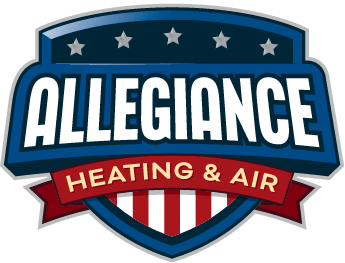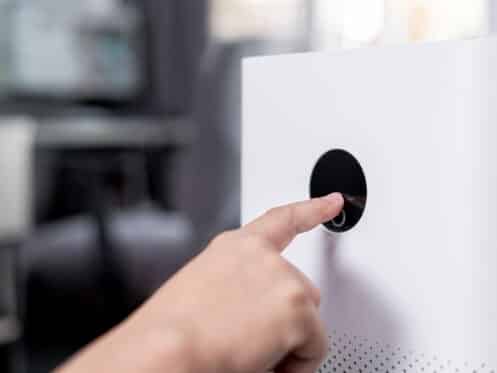Dealing with seasonal allergies or hay fever is definitely not fun, and the problem can be nearly debilitating for people who suffer from extremely severe allergies. If you do suffer from allergies, your best option for preventing allergy issues is to upgrade your HVAC system with some type of air filtration or air purification system. Today, we’re going to discuss some of your different options for air purification and how each one works to help reduce allergens so you can breathe more easily.
Media Filters and Electronic Air Cleaners
Both media filters and electronic air cleaners are relatively inexpensive options that can greatly improve indoor air quality and help prevent allergy symptoms. A media filter is basically just a larger, more effective version of a standard HVAC air filter. This type of filter is installed in the return air duct where it meets the HVAC air handler. Whenever your heating or air conditioning is running, the blower pulls air in through the filter. Air can easily pass through the filter, but the vast majority of dust, pollen, mold spores and other allergens will be trapped in the filter to ensure that your HVAC system doesn’t spread them around your entire house.
Electronic air cleaners, also sometimes known as electrostatic filters, are also installed in the return air duct and work to remove the majority of allergens and other airborne contaminants from the air as it circulates through your HVAC system. The difference is that an electronic air cleaner doesn’t have a physical filter or barrier. Instead, these units work by sending out charged ions that stick to any airborne particles. At the end of the air cleaner are metal plates that carry the opposite charge from the ions. Since the particles and the plates are oppositely charged, all of the allergens stick to the plates and are removed from the air.
Electronic air cleaners tend to be a bit more effective as some allergens may still pass through a media filter. On the other hand, media filters require less maintenance as all you typically need to do is replace the filter yearly. With an electronic air cleaner, you will need to fully clean the metal plates at least once every three or four months. You may potentially even need to clean the plates every month or so if you have multiple pets, your home is overly dusty or you smoke indoors.
Whole-Home Air Purification Systems
There are a number of different types of whole-home air purification systems that can be even more effective for eliminating allergens and airborne pollution. Many of these systems use UV lights that basically destroy organic allergens like mold spores, pollen and dust mites by altering their DNA. These units are also extremely effective for eliminating any bacteria and viruses from the air as well.
Some units simply shine powerful UV rays inside the return air duct to instantly destroy mold, bacteria and viruses. Some systems instead use UV light as part of a process known as photocatalytic oxidation. These systems are designed so that the UV rays shine onto special plates. As the light hits the plates, it produces a chemical reaction that releases charged ions into the air that are then circulated throughout the whole building.
These ions attract and stick to any airborne particles similar to how an electronic air cleaner works. The difference is that this type of system sends the ions into every room, which means that the system cleans the air in the entire building instead of just removing particles from the air flowing through your ductwork. This type of system is often referred to as an air scrubber as the ions essentially “scrub” the air clean of any allergens, pollutants and contaminants. In fact, the ions produced by these systems also eliminate or destroy any allergens on your countertops, floors and other surfaces.
When the ions come into contact with some pollutants, they make the particles heavy enough that they fall to the ground or large enough that they can then be trapped by your standard HVAC air filter. The ions also work to deactivate or destroy most organic allergens including mold, pollen and dust mites.
Other Ways to Minimize Household Allergens
Keeping all of your windows shut during allergy season is obviously important as otherwise lots of pollen and other allergens will constantly flow inside your home. The problem is that your family and especially your pets will also track lots of allergens into your home every time they come inside. Making sure that everyone takes their shoes off at the door can help prevent as much pollen and mold spores from being tracked inside, and you may also want to consider wiping off your dog’s paws when they come in to help rid them of allergens. Any outdoor pets should also be bathed regularly as their fur will also quickly collect lots of allergens.
Pollen and allergens also collect on your clothes any time you’re outside. If you suffer from severe allergies, you may also want to consider changing your clothes as soon as you come home and bagging up the dirty clothes until you can wash them to help prevent the allergens on the clothes from being spread throughout your home.
Regular cleaning is also essential for reducing the concentration of allergens within your home. Especially important is mopping your floors and vacuuming your carpets frequently since most of the allergens will settle down to the ground. Keeping your home clean is also essential for preventing issues with dust mites and other pests as they tend to thrive in dirty conditions.
If your home has carpets, you may also want to invest in a vacuum with a HEPA filter. The filter on most standard vacuums isn’t all that effective and will mainly only trap larger particles like dust and hair. As a result, most normal vacuums can actually worsen allergy symptoms as most smaller allergens like pollen, dust mites and pet dander will pass through the filter and end up being spread throughout the air.
Allergy sufferers should also consider having their home’s air ducts cleaned every few years. Even if you have some type of air purification system, lots of dust and other allergens can still collect and build up inside your ductwork and start blowing out of all of your vents. Dirty ductwork also creates perfect conditions for dust mites, cockroaches and even mice to start nesting and breeding inside your ducts.
If you have issues with mold in your home, you should definitely also consider investing in a whole-home dehumidifier. High indoor humidity is a common issue in the summer and can lead to condensation forming and mold beginning to grow inside your walls or in your ductwork. Whole-home dehumidifiers can prevent this issue as these units will constantly remove lots of moisture from the air whenever your AC is running to ensure you no longer have problems with condensation and mold growth. These units can also improve your home comfort and help you breathe better as humid air always feels warmer and can make it harder for you to breathe well.
At Allegiance Heating & Air, LLC, our team is always here to help you with overcoming allergies and other indoor air quality issues. We install a wide range of indoor air quality systems including media filters, electronic air cleaners, UV lights and whole-home air purification systems, and we also provide all types of residential and commercial heating and cooling services for customers in Greenville and the surrounding areas. For more information or to schedule an appointment, contact us today.




